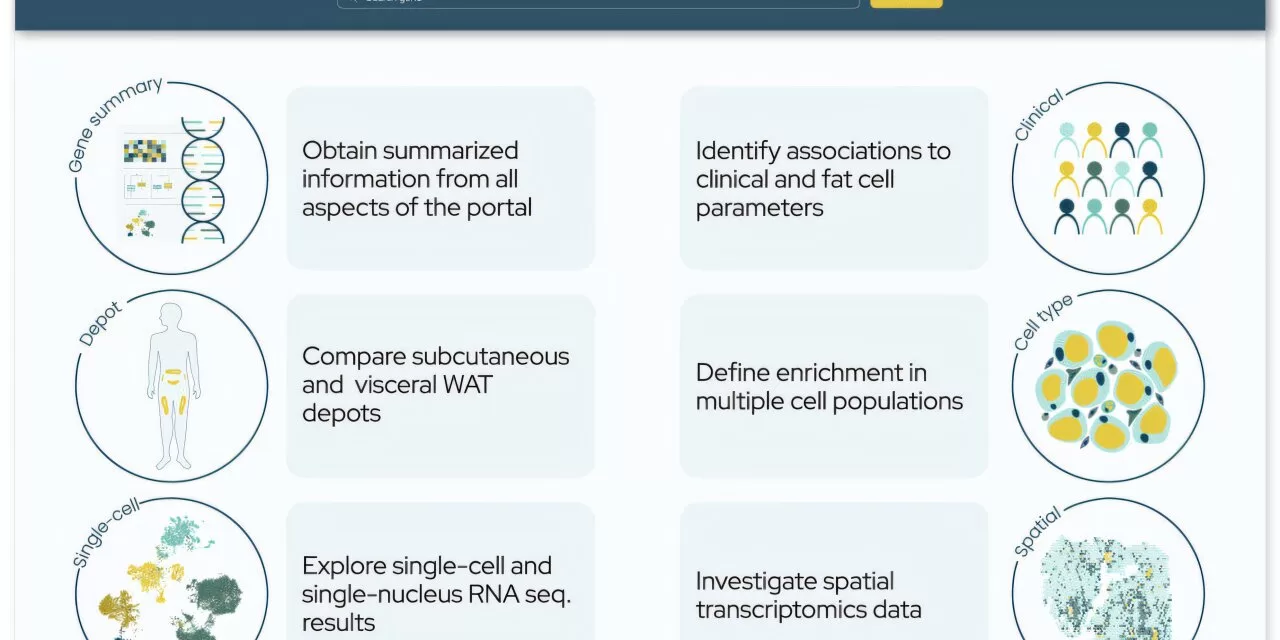Researchers at Karolinska Institutet and Helmholtz Munich, along with other collaborators, have developed a user-friendly portal that integrates comprehensive data on human adipose tissue. This innovative platform offers researchers and clinicians the ability to explore the biology of adipose tissue down to the individual cell level, eliminating the need for expertise in bioinformatics. The study detailing this project is published in Cell Metabolism.
For years, research on adipose tissue has generated extensive biomolecular data. However, these datasets have been scattered across various repositories, making holistic analysis difficult. Now, the launch of Adiposetissue.org provides a centralized knowledge hub, linking molecular and clinical data from over 6,000 individuals. This enables researchers and clinicians to delve deeper into obesity-related changes, weight-loss effects, and cellular mechanisms.
“We developed this knowledge portal to make adipose tissue data accessible to everyone, even those without expertise in bioinformatics,” said Lucas Massier, a researcher at Helmholtz Munich and an affiliated researcher at Karolinska Institutet in Sweden.
Advanced Analytical Tools for All Users
The portal aggregates data from 67 studies and is designed to cater to both experienced bioinformaticians and researchers with minimal computing knowledge. It includes a suite of advanced analytical tools and customizable modules that facilitate gene exploration, single-cell and spatial transcriptomics, and perturbation studies.
“By breaking down barriers to data accessibility and enabling large-scale analysis, Adiposetissue.org is a powerful resource for researchers studying adipose biology and metabolic diseases,” said Mikael Rydén, senior physician and professor at the Department of Medicine, Huddinge, Karolinska Institutet. He led the study alongside Massier and senior researcher Niklas Mejhert of Karolinska Institutet and Steno Diabetes Center in Copenhagen.
Future Expansion and New Data Integration
The portal’s development has been a major collaborative effort, and researchers plan to continue expanding its features. Future updates will include data on brown adipose tissue, additional clinical cohorts, and interspecies comparisons to enhance its utility.
A crucial part of this initiative was driven by Ph.D. student Jiawei Zhong and postdoctoral researcher Danae Zareifi from Karolinska Institutet. Their work ensured that data from diverse sources could be harmonized through standardized terminology. Given the scarcity of proteomic data, they also generated new protein profiling datasets, improving the portal’s ability to validate gene activity findings.
For more information, refer to the published study: Jiawei Zhong et al., “adiposetissue.org: A knowledge portal integrating clinical and experimental data from human adipose tissue,” Cell Metabolism (2025). DOI: 10.1016/j.cmet.2025.01.012
Disclaimer: This article is intended for informational purposes only. While efforts have been made to present accurate and up-to-date information, readers should consult original research sources for verification. The views expressed in this article do not necessarily reflect those of the researchers or institutions involved.












